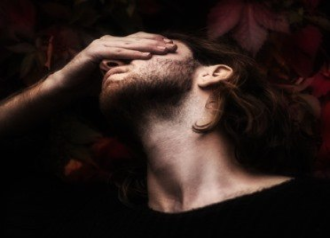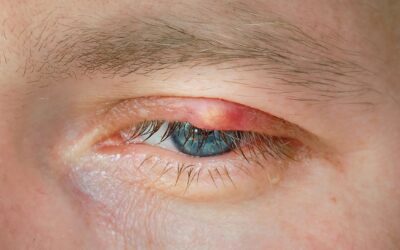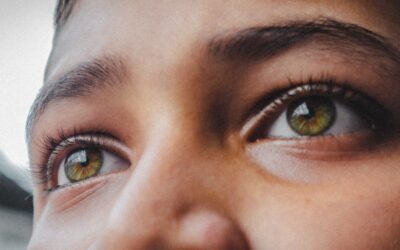As a sufferer of dry eyes you are well aware, I’m sure, of how annoying and debilitating this condition can be. Though the symptoms may vary from person to person, there is no doubt that every affected person has their life impacted,depending on the severity, to a lesser or greater extent.
In searching for the best treatment for dry eyes, you may have become very confused by the wide range of remedies on the market. In this article, I hope to explain some of the various options available and how they can help you.
It is important to first of all realise that Dry Eye Disease is both a chronic and a progressive condition. In simple terms this means that it is not something that can be easily cured, though it can be controlled with the help of various therapies, resulting in a reduction of the severity of the symptoms and better eye comfort. It also means that it is a condition that is likely to get progressively worse if no action is taken to help it, so the earlier the problem is dealt with, the better the likelihood of success.
Dry Eye Disease can be caused by many factors, and so before deciding on a particular treatment, it is advisable that you have a Dry Eye assessment to ascertain the exact cause of your symptoms so that you can choose the therapy which is most likely to benefit you.
For most cases of mild dry eyes, the first step in treatment is usually over-the-counter substitute tears in the form of drops, gels and ointments. There is a vast array of brands and formulations available, so it can be confusing deciding which to choose. Artificial tear drops provide quick relief with minimal blurring of vision but the effects are short-lived, so they need to be used frequently to get adequate relief, there are some products containing ingredients which are designed to make the drops longer lasting.
Gel-like drops cling to the surface of your eyes so last longer and need fewer applications, however they can cause transient blurring of your vision. Ointments for dry eyes, coat the front surface thereby reducing evaporation of the tears, however they are best only to be used at night as they can cause prolonged blurring of the vision. Which particular brand or formulation to select is a matter of personal choice – what works for one person may not work for another, so it is often a case of trial and error to find the one that best suits you. If your condition is more than just occasional and mild, then it is possible that you may need some sort of drops and/or oral medication which are only available on prescription. The purpose of these is to treat any bacterial overload which may be contributing to your condition, to reduce inflammation and to help your body produce better quality tears.
Another option are Punctal Plugs, these small sterile devices are inserted by your eye-care specialist, into the small openings in the lids at the corner of your eyes to block the drainage of the tears. This means the tear film stays longer on the eye hopefully resulting in fewer symptoms. These can certainly benefit some people but they have limited success as they do not treat the root of the problem. They can cause excessive tearing but usually they have to be used in addition to artificial tears.
For most sufferers of dry eyes the cause of their problem is related to Meibomian Gland Dysfunction. The Meibomian glands are responsible for the production of the protective, outer, oily layer of the tear film, if these glands are not functioning properly then they can become blocked resulting in a poor outer oily layer, leading to excess tear evaporation which causes all the annoying symptoms that you experience. This problem needs a two pronged attack to treat it: heat to melt the solidified blockages in the gland, and pressure to expel the melted secretions. A simple home remedy is to apply warm compresses to the closed eyes, in the form of warm flannels or more specialised ‘eye bags’ which can be heated in the microwave. Unfortunately, though they can provide some relief, they are of limited use as most of the heat applied gets carried away by the blood vessels. Also the heat cannot penetrate the thickness of the eyelid to work effectively enough to fully resolve the problem.
Meibomian gland expression, to clear the glands,can be carried out by some optometrists and ophthalmologists. A forceps type device is used to squeeze the clogged contents out of the Meibomian gland. This can be effective but it can be very uncomfortable especially to those with low pain thresholds, and it does require excellent patient co-operation. For those of you with moderate to severe dry eyes, you may want to consider one of the recent therapies which have been developed to get to the source of the problem to hopefully provide longer term effective relief.
IPL, (Intense Pulsed Light) which has been used in the cosmetic industry for some time, has been developed to treat abnormal blood vessels in the eyelid. This can lead to a reduction in inflammation which can be a cause of malfunctioning of the glands leading to solidification of the contents. This treatment is best used in conjunction with Meibomian Gland Expression. It cannot be used on darker coloured skin types. It needs to be repeated monthly, 3-4 times. It can feel slightly uncomfortable and side-effects of blistering and cheek swelling have been reported, though most disappear within a week.
At the Dry Eye Clinic, we have been having very good results with the latest technology developed to assess, diagnose and treat dry eyes. Lipiflow was developed in America and has been peer-reviewed (the highest level of evidence-based research) in ophthalmic journals. This patented treatment is specifically for people with Meibomian Gland Dysfunction (about 85% of dry eye patients). It allows us to examine the tear film and look at the actual structure of the meibomian glands, we can then ascertain if the Lipiflow treatment would be effective for a particular patient.
The treatment allows the correct, constant, precisely controlled temperature of heat to be applied directly over the meibomian glands to melt the secretions. Pulsating pressure is then applied to eliminate the melted secretions from the glands thereby restoring the correct balance of oils in the tear film. Local anaesthetic drops are given prior to the treatment to ensure that it is a pain-free procedure. The eye itself is protected at all times. There is usually some redness of the eyes after the treatment, which is short-lasting, but otherwise side effects are very rare. In clinical studies, 76% of patients report an improvement of their dry eye symptoms within 2 weeks, though it can take longer for improvement to be apparent. Patients also showed an improvement in the quality and quantity of the secretions and consequently, n increase in the time their tear film remained on the eye before evaporation. Typically the benefits of Lipiflow can last 1-3 years. If your dry eyes are affecting your quality of life, you can do something about it. You don’t have to put up with the discomfort. The first step is to have a full dry-eye assessment to check the exact cause and extent of your problem, then you can be directed to the exact treatments that are most likely to benefit you. So don’t despair there is help available. Please contact us for any further details or information.




